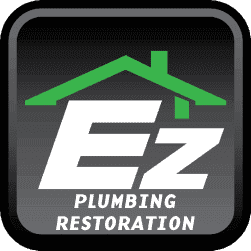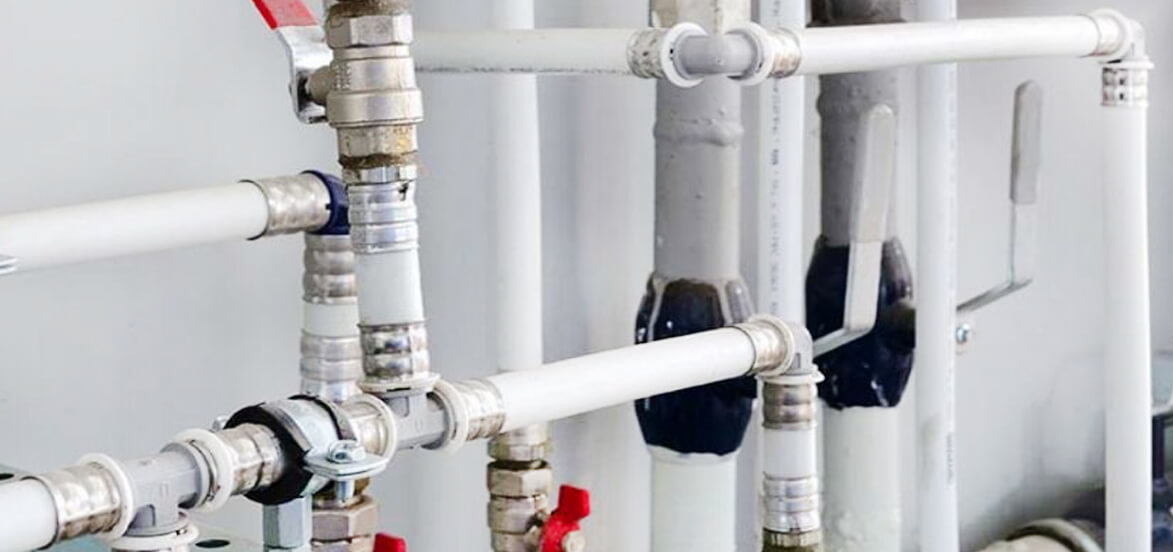How Often Should I Replace My Water Pipes in California?
Your home’s plumbing system is one of its most essential parts. Failure in any section of your home’s plumbing system can not only lead to embarrassing accidents but also cause property damage, which can be worth thousands. Pipes can fail due to age or low maintenance, but if you’re looking for a California repipe specialist, all you need to do is give a call to EZ Plumbing Restoration.
How Often Should You Go For Water Pipe Replacement In California?
Water pipes slowly get damaged over the years, and failure to maintain them properly by a repipe specialist in California can have disastrous consequences. Factors like the material your pipes are made from, the professionalism of the original plumber, and several other things decide the primary lifespan of your water pipes. The convenience of water pipe repairs also varies greatly: exposed piping is the easiest. It needs only replacement services of a water pipe by a reliable plumber. In contrast, repairs for underground or hidden piping will need a slab pipe repair company and subsequently a floor repair company. If you haven’t had maintenance done for your water pipes in a while, it might be time to call a California repipe specialist to take another look at your house’s plumbing.
Warning Signs Indicating That You Need The Services of a Repipe Specialist In California
Most of the time, you probably take your house’s plumbing for granted, not giving it much thought until it’s too late. Bad plumbing is one of the worst risks in houses today, as a single small leak can snowball into massive health issues like black mold growth. However, there’s a saving grace: there are always telltale signs that you can check up on to get a quick review of how your water pipes are. In most cases, cracked pipes will be the reason for leaking water. Sudden puddles or leaky faucets should be a huge red flag. Also, the low water pressure should be taken as a warning. The lack of good water pressure is a sign that something’s interrupting the steady flow of water.
Instead of not worrying about it until it’s too late, take active steps to preserve the integrity of your house’s plumbing. Consult the guide below, and if you match any of the criteria, it’s time to give a professional plumber a call:
Visible Water Drops from Leaky Pipes
Piping in its optimal condition is always tight to ensure there isn’t unexpected water leakage. The most significant and perhaps the most alarming sign of plumbing failure is that you begin to see visible puddles or pools of water around the house, and especially in places like kitchens and bathrooms. Basements are particularly susceptible to pipe damage and are often the worst places to have piping troubles since repairing underground piping is a lot of hassle. Regardless of the location, leaks can never be left alone, as they only grow worse over time. To check for puddles and get them repaired early, check under cabinets and kitchen sinks and along your basement and bathroom walls.
Frozen Pipes From Cold Weather
Frozen pipes aren’t that out of the blue if you live in colder regions of the US. Yes, it’s common enough to see your pipes coated over with frost. As harmless as this natural phenomenon might look, the frozen pipes can burst at the slightest sign of pressure, resulting in colossal flooding. This can even damage your house’s wiring and electrical systems. During winter, it’s vital to give visible pipes a cursory check to make sure they aren’t under too much stress. If the pipe looks frozen over, you should have maintenance performed on them by a repipe specialist in California before it gets even colder outside. You can also add insulation to most of the piping to prevent them from freezing.
A Deeper Dive into The Importance of The Material of Your Pipes Commonly Used Materials of Piping
While plumbing doesn’t always need to be an everyday concern, if you’re living in an older house or one that you bought recently, it’s worth taking the time to worry over the state of the property’s piping. If you want to take steps to check up on the condition of the house’s plumbing, the first thing you’ll need is knowledge of the plumbing system. This can include things like the material the pipes are made of, and commonly differs between the most widely chosen materials like:
1. Copper Pipes
Copper pipes were one of the most popular materials for piping in the latter half of the 20th Century and were used until 2000 when pipes replaced them with newer materials like PEX or PVC pipes. Their age notwithstanding, copper pipes are generally some of the most solid pipes out there. Ensure to take proper care of your plumbing system, and you can easily stretch out your copper pipes to be used for 50-80 years!
2. Brass Pipes
While popular at one time, brass pipes gradually became replaced by other materials like cast iron and copper piping. However, when piping manufacturers introduced them, brass pipes were a vast improvement over galvanized steel pipes since brass piping was more accessible to thread and fantastic for larger-scale water distribution systems. However, copper was a softer metal, which made it optimized for more flexible piping. Still, brass fittings are very common in plumbing today, given that brass is a long-serving material. Requiring only infrequent checkups by a qualified repipe specialist near you, brass pipes can be used for 50 years, coming in at only slightly less use than copper pipes.
3. Galvanized Pipes
Galvanized steel pipes are possibly the least optimal material for your piping. Used even before cast iron piping, galvanized steel pipes are guaranteed to have taken a lot of damage over the years, and it’s always worth replacing them with newer types of piping, ideally polyvinyl-chloride (PVC) pipes. Even at their most optimal, galvanized pipes offered no more than 20-30 years of use.
4. Cast Iron
If not for the looming costs these days, cast iron would be the second-best option behind PVC pipes. Rigid PVC pipes eventually replaced cast iron pipes, but these pipes are some of the sturdiest and most reliable ones out there. If you ensure to get your piping installed by a professional, cast iron piping can last up to a stunning 100 years, outlasting everything but PVC by multiple decades!
5. PVC Pipes
The standard material used for plumbing today, Polyvinyl-Chloride pipes, are the best option for piping today. Being made of plastic, these pipes don’t rust and only face the risks of physical damage or springing leaks from increased pressure. Additionally, PVC pipes are non-toxic. As long as you remember to have regular checks for leaks and pipe damage on exposed piping every couple of months, PVC piping can last indefinitely.
Also Read: Top Signs You Need to Repipe Your Home
Different Types Of Piping And The Factors To Consider Before Replacing Them
There are many different water pipes, from supply pipes that carry water to various outlets in the house to faucet lines that need steady flow for good water pressure. If you’re thinking of having your plumbing checked to see which pipes might need to be replaced, you should read up on the specifics of the different types of piping. Whether underground, hidden, or exposed pipes, these are some of the commonly found types of piping:
Supply Lines
Supply lines are always under the most pressure, taking a lot of damage and wear over the years. Older supply lines should be periodically checked for leaks and vulnerable points, if not replaced with newer PVC piping in galvanized steel pipes. Galvanized steel supply lines are usually the oldest type of pipes. Houses built in the earlier end of the 1900s will feature galvanized steel pipes that have assuredly taken damage since they were installed. You can easily find out what material your piping is made of by checking out piping in the basement and under your sink.
Faucet Lines
Faucet lines are also problematic a lot of the time. If your faucet lines are constantly having problems, it’s ideal to have them replaced, or at least have fittings and joints changed out to ensure integrity. Of course, you could also replace faucet lines for cosmetic reasons since extensive lengths of these are visible in some houses.
Drain Lines
Drain pipes need durability and resilience more than anything else, which is why either cast iron pipes or PVC pipes are most commonly used for drain lines. These pipes take a lot of damage from both growing tree roots and the weather, which go far in reducing the overall life of PVC pipes to a meager 20-40 years. On the other hand, cast iron pipes last at least 80 years, with cast iron drain lines regularly maintained by a repipe specialist in California offering 100 years of use!
Why You Need To Hire US – The Best Repipe Specialist In California:
EZ Plumbing Restoration is known for its water pipe replacement services in California for several years and is certainly one of the highest-rated EZ Plumbing Restoration. We are your place to call if you’re looking for a repipe specialist near you. Our reputed services include a wide range of repiping and other plumbing services and are offered at competitively low prices to ensure you’re okay with giving us a call when you need us.
California’s primarily temperate weather is harsh on PVC pipes, the most commonly found type of piping. In case you have passed the due date of inspection from specialists, or you need a repiping specialist for water pipe replacement, make the active choice to book an appointment with EZ Plumbing Restoration to get our expert services.


